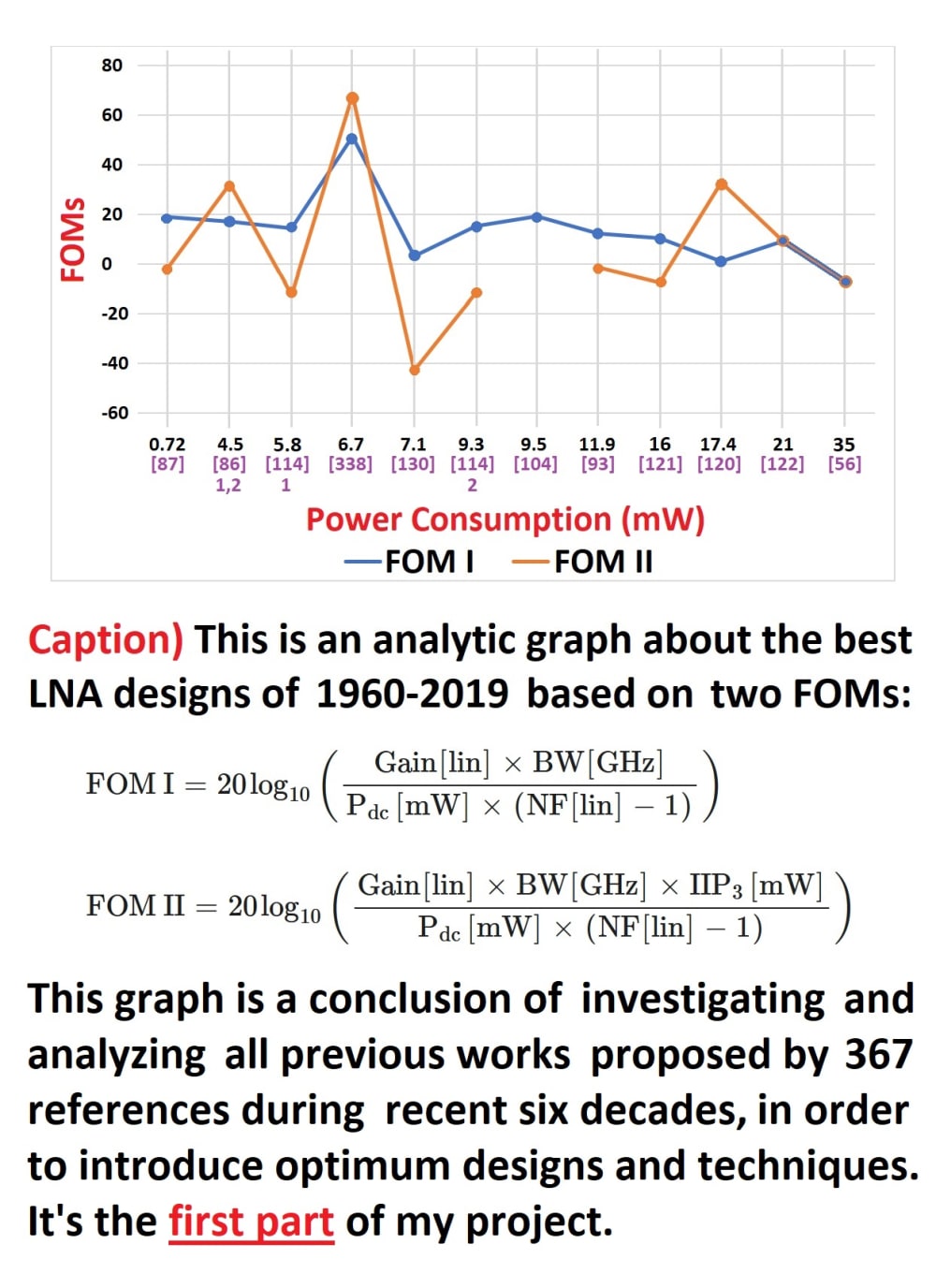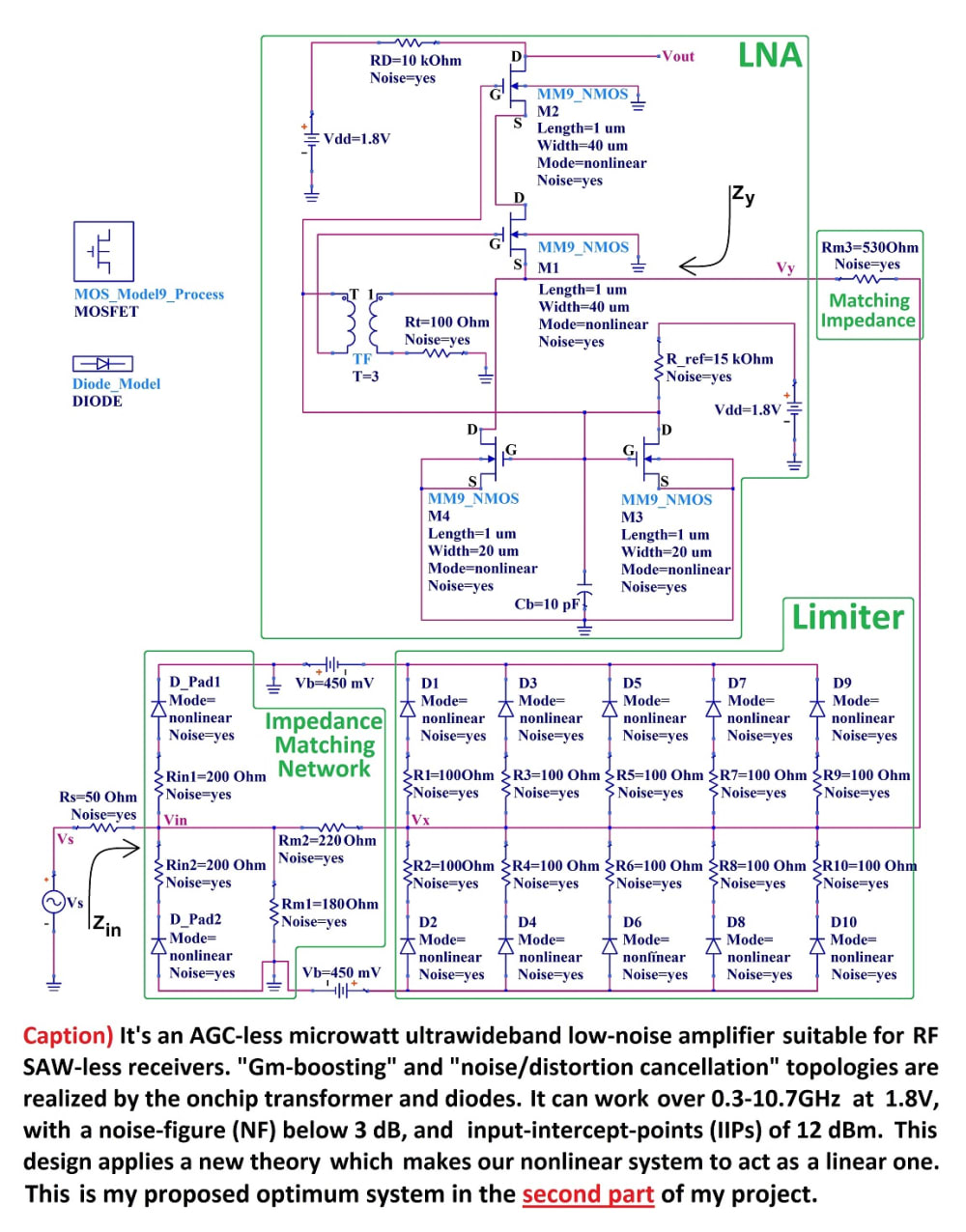This is a research project in the field of Radio-Frequency Electronics (RF Electronics) which, first of all, analyzes all topologies, techniques and technologies related to designing wideband and ultrawideband low-noise amplifiers (WB and UWB LNAs) during 1960-2019 in order to compare their achievements and distinguish the optimum LNAs and successful methods of these six decades, and second, presents a novel UWB LNA over 0.3-10.7 GHz as well as introducing new errors about these two important figures-of-merit: “Noise-Figure (NF)” and “Input-Intercept-Point (IIP)”. In fact, this project recognized challenges in its first part and proposed their solutions in its second part. Also, it applied MATLAB and ADS software besides 367 scientific references.
In 2021, after going through “review and acceptance processes” by professional referee-committee (composed of an editorial board and three expert reviewers), the first part of this project was published by Wiley in “IET Circuits, Devices & Systems” journal, and the second part was published by Wiley in “IET communications” journal. “Wiley” is an international publishing company located in the US that focuses on academic and instructional materials, and “IET” is a world leading professional organization of engineering and technology located in the UK which also support several ISI/Scopus journals such as “IET Circuits, Devices & Systems” and “IET communications”.
In 2023, Wiley announces that my articles are selected as the “Top-Cited” and “Top-Downloaded” articles of 2021-2022. Actually, these awarded-certificates acknowledge that my novel research-project and its solutions and achievements have been important and significant enough to be followed by other scientists and engineers around the world. For example, the following works used my articles as their reference:
See the reference 20 at (https://doi.org/10.1109/ICERECT56837.2022.10060347)
See the reference 3 at (https://doi.org/10.1049/cds2.12124)
See the reference 21 at (https://doi.org/10.3390/electronics11040633)
See the reference 2 at (https://doi.org/10.54614/electrica.2022.21136)
See the reference at (https://doi.org/10.1109/TCSII.2023.3263503)
See the reference 80 at (https://doi.org/10.1049/cds2.12126)
Please note that, basically, professional organizations (such as Wiley, IET, IEEE, Springer and Elsevier) just accept novel high-quality works and always award the mentioned certificates only to the best of them.
The first page of my articles and also the certificates are attached. For more info, you can contact Wiley and IET directly or visit the article's links:
My first article: (https://doi.org/10.1049/cds2.12071)
My second article: (https://doi.org/10.1049/cmu2.12308)
Like this entry?
-
About the Entrant
- Name:Shahab Shahrabadi
- Type of entry:individual
- Software used for this entry:MATLAB and ADS
- Patent status:none





